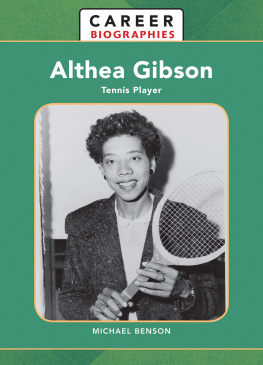The University of Chicago Press, Chicago 60637
The University of Chicago Press, Ltd., London
2016 by The University of Chicago
All rights reserved. Published 2016.
Printed in the United States of America
25 24 23 22 21 20 19 18 17 16 1 2 3 4 5
ISBN-13: 978-0-226-42359-3 (cloth)
ISBN-13: 978-0-226-42362-3 (paper)
ISBN-13: 978-0-226-42376-0 (e-book)
DOI: 10.7208/chicago/9780226423760.001.0001
Library of Congress Cataloging-in-Publication Data
Names: Altemus, Althea McDowell, 18851965, author. | Bachin, Robin Faith, editor, writer of added commentary.
Title: Big Bosses : a working girls memoir of Jazz Age America / Althea McDowell Altemus ; edited and annotated by Robin F. Bachin.
Description: Chicago : The University of Chicago Press, 2016. | In partnership with Vizcaya Museum and Gardens. | Includes bibliographical references.
Identifiers: LCCN 2016014271 | ISBN 9780226423593 (cloth : alk. paper) | ISBN 9780226423623 (pbk. : alk. paper) | ISBN 9780226423760 (e-book)
Subjects: LCSH: BusinessmenUnited States. | Rich peopleUnited States. | Nineteen twenties. | Altemus, Althea McDowell, 18851965. | SecretariesUnited StatesBiography. | Working mothersUnited StatesBiography.
Classification: LCC HC102.5.A2 A58 2016 | DDC 651.3/741092dc23 LC record available at http://lccn.loc.gov/2016014271

This paper meets the requirements of ANSI/NISO Z39.481992 (Permanence of Paper).
Big Bosses is the memoir of professional secretary Althea Maggie McDowell Altemus (18851965). Althea was born into a family of factory workers in Woodstock, Illinois. She married Wayne Altemus in 1910, and their son, Robert, was born in 1913. After her husband developed an alcohol dependency, Althea divorced him in 1917. She furthered her career as a secretary in the years that followed. Althea likely wrote Big Bosses in 1932, when she was in her late forties, recounting details of her life and her work as a single mother over the prior fifteen years. That Althea created Big Bosses is extraordinary; that Vizcaya Museum and Gardens rediscovered the historically rich document through Altheas grandsons was tremendously good fortune.
The typed manuscript runs nearly two hundred pages, consisting of a preface and a dozen chapters. Each chapter poignantly describes an episode of Altheas life, with most organized around specific employment experiences. Her life is largely typical for a working woman of the time, but it is exceptional with respect to the many internationally known figures she encounters. The narrative begins in Miami, Florida, where Althea moved in 1917 or 1918 to work as a private secretary for International Harvester vice president James Deering at his lavish and fantastical bayfront estate called Vizcaya (now the National Historic Landmark operating as Vizcaya Museum and Gardens). Big Bosses then follows Althea to Chicago, to her familys hometown of Elgin, Illinois, and then to New York. In each location Althea describes her quest for companionship and employment while maintaining a deep commitment to caring for her young son.
The east facade of Vizcaya, James Deerings Miami estate, from Biscayne Bay, with the Barge in the foreground.
After working for Deering at Vizcaya, Althea apparently worked for such prominent business leaders as Samuel Insull, president of Chicago Edison; New York banker S. W. Straus; and real estate developer Fred F. French. She held less conventional positions, too, with a dissolute Swiss architect, the jealous wife of a big boss, and a jeweler who catered to prostitutes. In the course of her work and travels, Althea also apparently encountered orator and politician William Jennings Bryan, inventor Thomas Edison, art patron Helen Clay Frick, and several actresses, including Constance Talmadge, who even cast Altemus as an extra in a Hollywood film. At the conclusion of Big Bosses, Althea describes her return to Miami during the 1920s real estate boom and the tumultuous years that followed.
Still from the 1921 film Lessons in Love, with Constance Talmadge on a bench in the foreground and (presumably) Althea Altemus at the center of the circular table in the background, wearing a white tam-o-shanter. Image courtesy of Cohen Film Collection LLC.
The manuscript is greatly enriched by Altheas inclusion of twenty ink illustrations by architect Phineas Paist (18731937). Paist was born and classically trained in Philadelphia, and he studied abroad. He relocated to Miami in 1916 to work on the Vizcaya estate, and he remained in the area thereafter, assuming a leading role in the design of the city of Coral Gables. His illustrations for Big Bosses were drawn on paper the same size as the text pages and inserted where appropriate. All but one of the illustrations represent characters or literal scenes from the manuscript, with five featuring or including Altheas son, Robert, referred to as Tidbits. Each illustration includes a handwritten title or other identifying notation, and virtually all are marked with a number that is, likewise, referenced in the text. Paists drawings are insightful and playful, complementing the content and tone of the narrative.
Big Bosses is at once personal and professional, candid and discreet. Althea created her memoir using a typewriter, the principal tool of her trade. Reading the original manuscript as a thick stack of 8-1/2 by 11 pages, with double-spaced text in traditional Courier font, one can imagine the staccato rhythm of Altheas fingers pressing the keys and the keys, in turn, striking the paper. And one can appreciate the immense effort it took to prepare Big Bosses. (See figures on pages xviixx.) Altheas act of committing her tell-all tale to paper in so formal a manner seems extremely courageous, especially when one considers that she wrote Big Bosses without formal literary training and in a day devoid of correction fluid. That the resultant narrative is compelling, humorous, and insightful is impressive and moving.
Althea conveys the triumphs and hardships of her life as a single working mother in the early twentieth century, and she shares frank stories of the characters she encountersher companions and her employers who range from ethical and loyal to unscrupulous and self-serving. Althea originally identified herself on the cover page of the manuscript as A Private Secretary, only adding her name in handwritten notes after its completion. (See figure on page xvii.) She maintained in her preface that Big Bosses was based on actual facts, with the exception of names. Archival research suggests that some elements of the manuscript, indeed, adhere very closely to fact, while others are embellishments or fabrications. When typing the manuscript, Althea, in fact, used both actual and fictitious names; but at some point thereafter she apparently had second thoughts over the extent of her transparency and boldly, and perhaps hastily, used a pen to cross out some of the actual names in her neatly typed manuscript and replace them with handwritten pseudonyms. (See figures on pages xix and xx.) She also fictionalized her account by changing dates, conceivably making it more difficult to discover her identity in the event Big Bosses was published. Its unclear whether Althea wrote the manuscript primarily for personal reasons as a cathartic diary, or whether she actually hoped to publish it during her lifetimesharing with all the world the extraordinary and sometimes unfortunate people and circumstances that shaped her life.


 This paper meets the requirements of ANSI/NISO Z39.481992 (Permanence of Paper).
This paper meets the requirements of ANSI/NISO Z39.481992 (Permanence of Paper).












